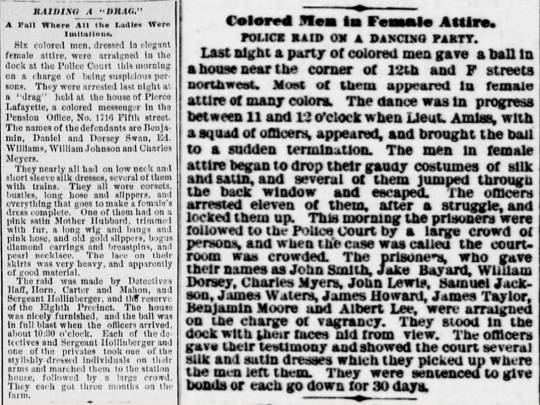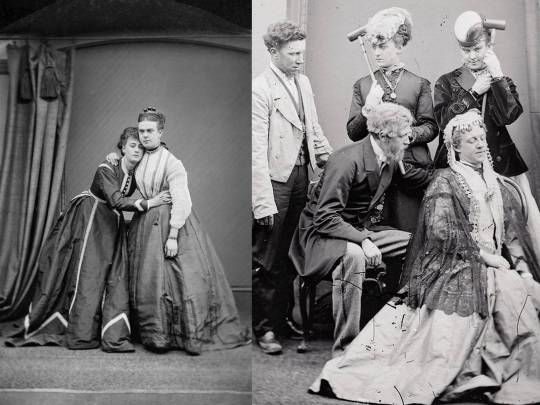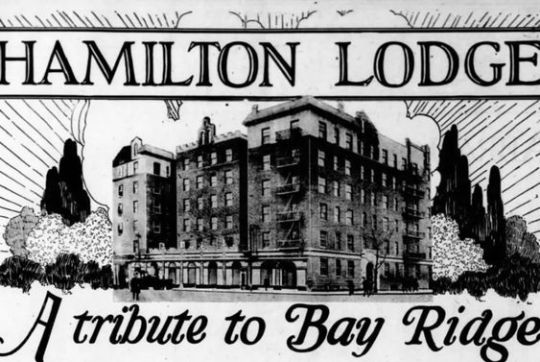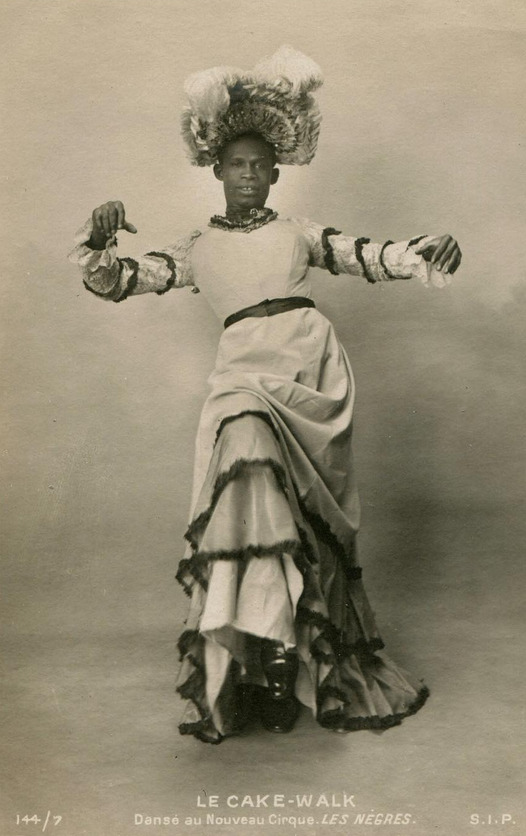#William Dorsey Swann
Explore tagged Tumblr posts
Text
Remember, the first known drag queen was a former black slave
William Dorsey Swann



#put that in your history books#black history#lgbtqia#drag queen#William Dorsey Swann#history#queer history#pride month
57 notes
·
View notes
Text
Why doesn't anyone talk about William Dorsey Swann? Not only was he the first drag queen, but he was also a former slave who fought hard for LBGT rights despite the police arresting him on false pretenses because they didn't like that he hosted drag parties. X

#queer history#queer history and black history are so deeply intertwined sometimes#William Dorsey Swann#queer black history#black queerness#drag#history
28 notes
·
View notes
Text

happy pride here’s probably my gayest painting
#the last supper#drag queens#lady bunny#dylan#bianca del rio#ru Paul#marsha p johnson#William Dorsey swann#katya zamolodchikova#katya#trixie mattel#peppermint#divine#last supper#drag race#I don’t like ru Paul don’t @ me#he’s not a good person so he gets to be Judas#anyway#it’s for sale too so hmu if you want it#religious trauma#religion#happy pride
15 notes
·
View notes
Text


William Dorsey Swann
#my post#william dorsey swann#black history#lgbt history#lgbt#drag#drag queen#old newspapers#newspaper archive#washington dc#late 1800s
2 notes
·
View notes
Text
The First Self-Proclaimed Drag Queen Was a Formerly Enslaved Man
In the late 19th century, William Dorsey Swann’s private balls attracted unwelcome attention from authorities and the press

In the late 1880s, a formerly enslaved man named William Dorsey Swann started hosting private balls known as drags, a name possibly derived from “grand rag,” an antiquated term for masquerade balls. Held in secret in Washington, D.C., these parties soon caught authorities’ attention.
As the Washington Criticreported in January 1887, police officers who raided one such gathering were surprised to encounter six Black men “dressed in elegant female attire,” including “corsets, bustles, long hose and slippers.” The following April, the Evening Starreported on a raid that targeted men in “female attire of many colors,” as well as “gaudy costumes of silk and satin.” On both occasions, authorities arrested the party guests and charged them with “being suspicious characters.”

Joseph’s chance find marked the beginning of a yearslong quest to uncover Swann’s story—and, with it, the history of drag in the United States. He chronicles the results of this research in an upcoming book titled House of Swann: Where Slaves Became Queens—and Changed the World. Drawing on extensive archival research, Joseph presents a compelling portrait of the nation’s first self-proclaimed drag queen. The historian proudly positions Swann as the “first queer American hero.”
The identification of Swann as the first reported drag queen in the U.S. is a “major event,” says Jen Manion, a historian at Amherst College. “LGTBQ history is hampered by the lack of diaries and personal letters and family papers, because you just don’t put [those feelings] in writing.” For much of recorded history, Manion adds, being gay or bisexual was considered “a sin; it’s illegal.”
Joseph says his research resurfaces the “experiences of queer people, … historical experiences, not fictionalized experiences, documenting them rather than speculating.” These findings, in turn, helped him pinpoint the birth of “the drag queen.”

The concept of drag “existed for some period of time unknown,” says Joseph. But the term only came into use in 19th-century Great Britain, where Joseph says it referred to “a gathering of people, particularly men, who were dressing as women.” In 1871, two members of the British aristocracy were put on trial after they were caught dressing as women in public. Authorities charged Ernest “Stella” Boulton and Frederick “Fanny” Park with “conspiring and inciting persons to commit an unnatural offense.” A jury found the defendants not guilty but handed down a minor indictment to the men for wearing women’s clothing.
Cross-dressing, which is often a component of drag, has a lengthy history on both the stage and the screen, from Elizabethan-era performances in which men played women to Japanese Kabuki theater. In the early 20th century, performers like Julian Eltinge became stars by impersonating women during the vaudeville craze. In the 1950s, Milton Berle dressed as a woman on his variety TV show, as did comedian Flip Wilson in the early 1970s. In the early 1980s, the sitcom “Bosom Buddies” starred Tom Hanks and Peter Scolari as two young men who disguise themselves as women so they can live in an inexpensive, women-only apartment building.

Historian Kathleen Casey, author of The Prettiest Girl on Stage Is a Man: Race and Gender Benders in American Vaudeville, takes a much wider view of drag. While she includes all manner of cross-dressing performances in her definition, she doesn’t think there will ever be “a stable meaning of the term ‘drag.’” Casey adds, “Drag is about race, class and sexuality as much as it is about gender. If we focus exclusively on only one of these intersections, we fail to see how drag performances are layered across time and space and can have multiple meanings for different audiences.” Drag, she says, is really about a performer’s own perspective of their work, as well as audiences’ understanding of this work.
Many of the “contemporary categories and terms that we use in modern life to describe LGBTQ people or sexual and gender minorities” date to the late 19th century, says Manion. “Lesbian,” for instance, was first used in a medical journal in 1883. The historian adds, “We debate amongst ourselves as scholars when it seems appropriate to use contemporary terms to describe things [in] the past, but in this case, these were terms used by … the people at the time as well.”

Swann was born into slavery in Washington County, Maryland, around 1858. According to a 2021 entry by Joseph in the African American National Biography, Swann was the fifth of 13 children born to enslaved housekeeper Mary Jane Younker and enslaved wheat farmer and musician Andrew Jackson “Jack” Swann. (His biological father may have been a white man, but Joseph hasn’t found definitive evidence confirming this theory.) After the Civil War ended in 1865, Swann’s parents bought a plot of land and started a farm. Encouraged to work as soon as he was old enough, the young Swann found employment as a hotel waiter. In 1880, he relocated to Washington, where he worked as a janitor and sent money back home to his family.
Like Washington more broadly, the capital’s underground queer networks were divided into white and Black communities that rarely intersected. As a 2019 report prepared for the city’s Historic Preservation Office notes, “It was a hushed fact that Lafayette Square in D.C., which is adjacent to the White House, was a known cruising spot for gay men, both Black and white,” but the majority of these individuals were only interested in liaisons with partners of the same race. An exception to this trend was Washington’s drag scene, which often attracted mixed-race audiences.
Forging a place for himself in the city’s queer Black community, Swann held parties that Joseph deems the first documented “drag balls” in American history. Held in secret, they provided a safe space for gender expression but were risky to attend. “A large but undetermined number managed to flee during the police raids, but the names of those arrested and jailed were printed in the papers, where the men became targets of public scorn,” wrote Joseph for the Nation in 2020. “In post-Civil War America, there was very little patience for men who subverted gender norms.” Sentences for those charged with attending drag balls ranged from around three to ten months.

Around this same time, Swann became enthralled by the “queens of freedom” crowned at Washington’s Emancipation Day parades—annual celebrations first held in April 1866. Historically, each neighborhood was represented by a woman who “personified freedom for Black people,” according to Joseph. Inspired by these queens, Swann started crowning the winners of his dance competitions the “queen of the ball,” says Joseph.
Swann also adopted the title for himself. As the Washington Critic noted on April 13, 1888, “William Dorsey, who, by the way, was the ‘queen,’” was one of 13 people arrested during a raid on a “drag party” the previous night.
“There’s this concept of drag, which is separate, and there’s the concept of queens of freedom, and in D.C. in this particular time, post-slavery, post-Reconstruction, these two concepts collide,” says Joseph. “To identify as a drag queen, which is what William Dorsey Swann did, is combining these two strains, these two cultural traditions.”
The 1880s saw a “wave of laws passed in cities all across the country explicitly banning cross-dressing,” says Manion, who adds that the rules were “applied very selectively” and were riddled with inconsistencies and contradictions. The arrests of Swann and his friends were “even more sensationalized in the press and probably drew the attention of authorities because most of the participants were Black,” Manion explains. “And this is in Jim Crow America. For queer … Black Americans to just see so much joy and freedom in their gender expression at this time was definitely seen as a threat.”

The court sentenced Swann to 300 days in prison. After serving three months of his sentence, Swann, who had pled not guilty, filed a petition for a pardon from President Grover Cleveland, says Netisha Currie, an archives specialist at the National Archives, which houses a copy of the petition. In a show of support, 30 of Swann’s friends signed the document. But U.S. Attorney A.A. Birney argued vehemently against the pardon, stating,“The prisoner was in fact convicted of the most horrible and disgusting offenses known to the law; an offense so disgusting that it is unnamed. … His evil example in the community must have been most corrupting.”
Ultimately, Cleveland denied the petition. Still, wrote Joseph for the Nation, Swann’s unsuccessful attempt to clear his name represents the earliest documented example of an American activist taking “specific legal and political steps to defend the queer community’s right to gather without the threat of criminalization, suppression or police violence.”
As Manion says, “What’s unique about [Joseph’s] work is that it captures a collective community. When we have been able to identify queer and trans figures in this era and earlier, we find them in isolation. And we can seldom connect the dots to say, ‘Oh, these two couples were friends. They always hung out.’ … We have very little evidence of collective socializing.”

No known pictures of Swann survive. But his contributions to queer activism in Washington will soon be recognized with the redesignation of a stretch of Swann Street Northwest in his honor. The street was originally named for Thomas Swann, a former Maryland governor and Baltimore mayor who bore no relation to the drag queen.
“We have seen so much anti-trans and anti-drag legislation and rhetoric around the country in a very problematic way,” says Brooke Pinto, a D.C. Council member who introduced the bill. “In Washington, D.C., where we are proud to have so many trans residents, we [need to] speak up and recognize, sometimes through symbolism, sometimes through legislation, how important these issues are.”
The bill also calls for a historic plaque to be posted in Dupont Circle, a Washington neighborhood with a rich LGBTQ history. The plaque will sit at the corner of New Hampshire Avenue, Swann Street Northwest and 17th Street Northwest.
“One of the things that’s so exciting about this case is that it is an African American man who was formerly enslaved,” says Manion. Such individuals “just don’t get … recognition in our histories of LGBTQ people, in part because we usually can’t find them in the archives. But … Swann was hiding in plain sight.”
#swann#Drag Balls#Origins of Drag Balls#DC#LGBTQ+#The First Self-Proclaimed Drag Queen Was a Formerly Enslaved Man#William Dorsey Swann#Drag Queens#origins of drag ball culture in DC
14 notes
·
View notes
Text
No known pictures of Swann survive. But his contributions to queer activism in Washington will soon be recognized with the redesignation of a stretch of Swann Street Northwest in his honor. The street was originally named for Thomas Swann, a former Maryland governor and Baltimore mayor who bore no relation to the drag queen. “We have seen so much anti-trans and anti-drag legislation and rhetoric around the country in a very problematic way,” says Brooke Pinto, a D.C. Council member who introduced the bill. “In Washington, D.C., where we are proud to have so many trans residents, we [need to] speak up and recognize, sometimes through symbolism, sometimes through legislation, how important these issues are.” The bill also calls for a historic plaque to be posted in Dupont Circle, a Washington neighborhood with a rich LGBTQ history. The plaque will sit at the corner of New Hampshire Avenue, Swann Street Northwest and 17th Street Northwest. “One of the things that’s so exciting about this case is that it is an African American man who was formerly enslaved,” says Manion. Such individuals “just don’t get … recognition in our histories of LGBTQ people, in part because we usually can’t find them in the archives. But … Swann was hiding in plain sight.”"
2 notes
·
View notes
Text
WHERE THE FUCK IS HER FILM???? I DEMAND A FULL-FEATURE LENGTH FILM
SCRATCH THAT I DEMAND A TV SERIES WITH 3 SEASONS NOW


80K notes
·
View notes
Text
Black Queer Figures Day 3
William Dorsey Swann
Swann was born into slavery in 1860 as the fifth of 13 children. As an adult Swann settled in Washington D.C. where he became known for holding drag balls. He was known as "the Queen" by friends and rerferred to himself as "the Queen of Drag". Swann's parties were frequently raided by the police, the raid on his thirtieth birthday party being the most notable as it is the first documented arrest for female impersonation. Swann resisted arrest in his "gorgeous dress of cream colored satin" reportedly telling a police officer "You is no gentleman".The 1888 Washington Post article reporting the raid brought the previously underground world of drag into the light (and also how Swann's existence was rediscovered over a century later). Swann continued hosting balls, and was arrested again in 1896 for "keeping a disorderly house". He requested a presidential pardon from Grover Cleveland, who refused his request. This was the first recorded case of an American taking political/legal action to try and defend the LGBTQ community's right to gather. Swann retired from drag in 1900, passing the torch to his brother who also made clothes for the community. Swann died in 1925.
#black history month#black history matters#black history#lgbt history#lgbtq#lgbtqia#drag queen#Queen of Drag#William Dorsey Swann
0 notes
Text
Historian Henry Louis Gates, Jr., has called the Harlem Renaissance "As gay as it was Black."
With the convergence of the great migration and the jazz age, Harlem became a new center of cultural life for African-Americans. It brought together Black artists in a way that had never been seen before and saw an abundance of new music, theater literature, and art.

Chief among the new art being created there, of course, was drag.

While drag houses and drag balls had previously been put together by the likes of William Dorsey Swann, they reached a level of unprecedented vibrancy and popularity in Harlem in the 1920s. Famed poet Langston Hughes called them "The strangest and gaudiest of all of Harlem's spectacles."
The most celebrated of these balls was the one organized by the fraternal organization The Society of Odd Fellows at the Hamilton Lodge.

As told by writer George Chauncey in an article for Columbia News, "After I published Gay New York I met a gentleman who grew up in Harlem whose parents would dress up to go to what they called the “faggots’ ball,” and come home and talk about how fine this one looked, and how wonderful it was. He said, "My mother was a very ladylike lady. She was a very prominent woman in Harlem society. This is just something you did.""
737 notes
·
View notes
Note
Black genderfluid culture is looking up for representation and being like: “Why are you white? Where's my representativity, WHERE'S THE MFS THAT REPRESENT MY TRANSITION GOALS???”
I'm dead serious, the amount of times I looked for androgynous people for a lil reference (I need some visualization, long story short I'm using subliminals to get rid of gender dysphoria) and only white and sometimes east asian people popped up makes me mad because: Yo, why only the white enbies get their reference and representation? Why not me? Hm??
And that makes me feral, because the most queer representation, specially trans representation, we see is white. All white people, and that's infuriating because people of colour, trans women of colour, more specific, were a huge, HUGE, part of queer history, and y'all decide to simply ignore our voices? Really nigga? 🤨
Taking this opportunity on this black history month, I wanted to make a highly important request: Dear lgbtqia+ community: PLEASE HEAR COLOURED QUEER VOICES.
Sorry for the rant, I need to get that out. =3
no no you get it.
im white but we don’t talk about that lmao
in the past, A LOT of black folks did a LOT for this community. The fact that the face of the community is now a gay, cis, skinny white guy FUCKING SUCKS!
William Dorsey Swann and Marsha P. Johnson are just two of the names that SHOULD BE TALKED ABOUT MORE!
Please, support your POC girlies! (gender-neutral) This is such a big issue in the LGBTQ community and many others! And you’re right, there really aren’t ANY references for black LGBTQ people.
If anyone has any resources/photos or anything you’d like to share regarding this, please do!!
I’m also passionate about this if you couldn’t tell LMAO
495 notes
·
View notes
Text
Being pale rly do carry u in even the modern notion of queerness bc the first drag queen was a black person born into slavery william dorsey swann but somehow men who hated gay ppl+ ‘came out as straight’ in the peak of HIV/AIDS r considered historical queer icons bc they had pale skin and a thin wrist.
169 notes
·
View notes
Note
Hi, I saw your post about doing research on drag, and wanted to to offer a few questions. I am aware of modern drag, but know there is much I don't know.
How far back are you going with your timeline?
In the US, what are the styles of drag (if that's a good word for it)?
Are there regional themes?
Thank you.
So I only spend a brief time talking about the history of drag since the paper is mostly focused on legislation in 2023-2024, but I can answer in general terms! The first recorded American "Queen of Drag" goes back to the late 1800s with William Dorsey Swann (who is fascinating. More people should know about Swann and they need to get more credit for their place in queer history), though the art form itself is commonly credited to the 16th and 17th century theatre scenes in England (if not even farther back depending on what you count as drag.)
This is more anecdotal, but there are lots of different styles of drag these days just depending on what you mean by "styles." There are different ways of depicting yourself (like "fishy" drag where you attempt to "pass" as much as possible vs. something super glam vs. something more alt) but also depending on where you go there might be different levels of lip-syncing vs. live singing vs. something else. For example where I perform as a king, people don't really do a lot of live singing. Looks tend to be very shiny and rhinestone-heavy. That said, if you're not going shiny there's also a very strong alt-scene that goes hard.
8 notes
·
View notes
Text

WILLIAM DORSEY SWANN IN DRAG PERFORMS A CAKEWALK IN PARIS BY UNKNOWN (1903)
15 notes
·
View notes
Note
Hi!
So, I'm writing a story set in Victorian England, and I was wondering if makeing a character a cross-dresser would be transphobic.
Let me explain, the character in question is a woman and, to live through that time with more independency, she presents herself as a man. The story is a mistery thriller, so it doesn't center about this, if that matters.
Anyway, thank you very much!
Short answer: this is not transphobic! Go for it. Just be mindful about potentially writing cissexist passages accidentally. There's some stuff we've written about Big Reveal scenes and those can be a major issue, depending how they are written. Even if the character is cis, it can fall into the same problematic tropes sometimes.
Long answer: This genre of stories (women crossdressing as men) were a staple for me in my egg mode era. I loved them and the main thing that sort of made my nonbinary identity sink in for me was that I would want the characters to also dress as men and want to mix up the pronouns Just Because, whereas a lot of characters written who crossdress for safety and oppression reasons feel trapped by it, and do want to be recognized as women but feel they can't be.
While I say this, I want to make room to acknowledge that there are people for whom being a crossdresser is a part of their identity. This is a huge thing in Drag Culture in general especially - there are people who want certain pronouns while in drag and other ones out of drag. Drag Culture specifically was originated by William Dorsey Swann in the 1880s-90s, so this was later Victorian, and this was generally the venue of formerly enslaved people, and included dances which originated from the culture they had while enslaved (like the Cakewalk).
There has been a wider culture of people crossdressing as part of events for a very long time (not just drag), just as there has been people who crossdress outside of them. You can read more on the history and culture around crossdressing historically up to the present here.
I also feel like it's worth mentioning that some of these books I found comfort in during my egg mode days have now had authors come forward to state that they could be described as gender-fluid or with other labels. The one that comes to mind is Tamora Pierce's Alanna, who the author described this way in a tweet.
I guess what I'm getting at is that there's a lot of culture to gender nonconformity that you might be interested in learning about or touching on. But there are many people who do this in isolation and stealth, and telling those stories matters too.
18 notes
·
View notes
